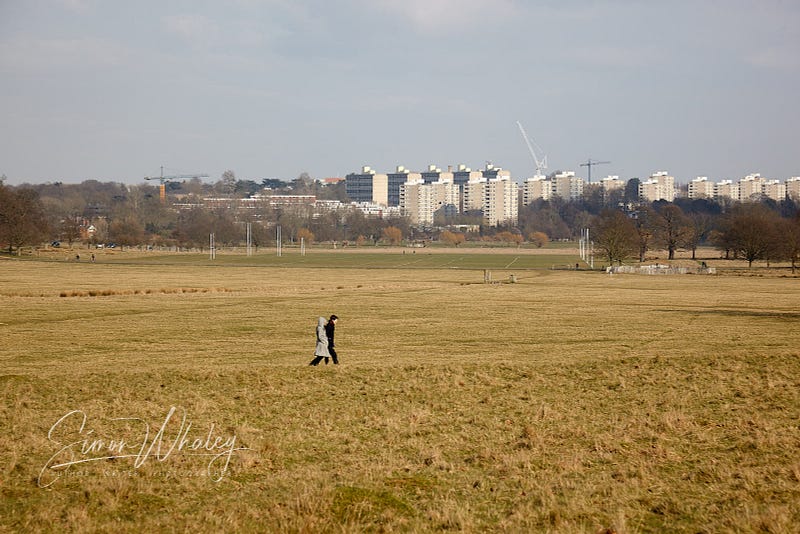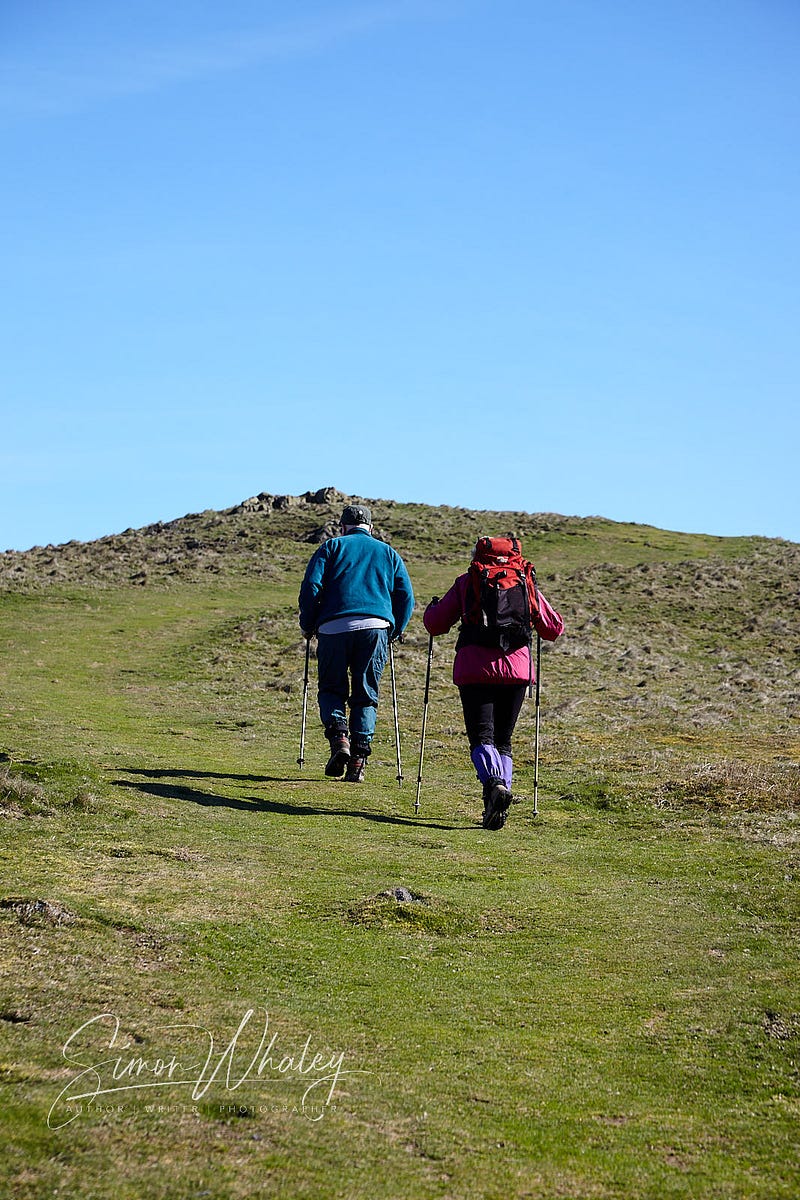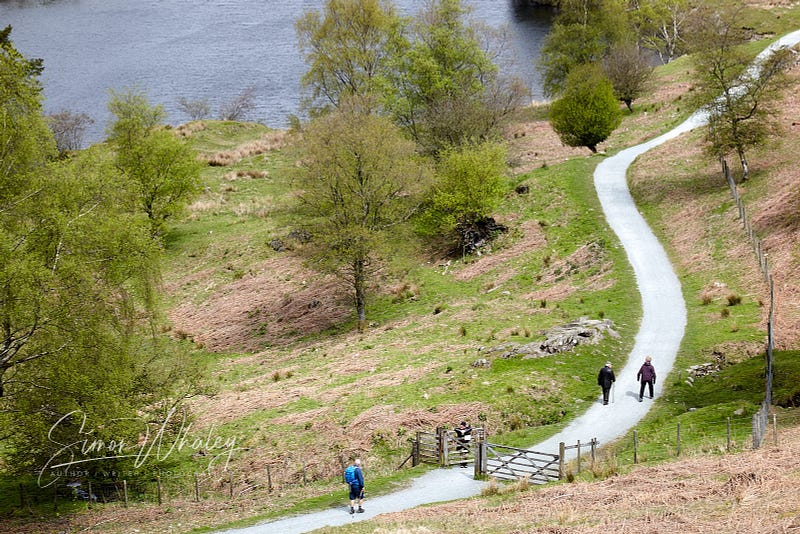Walking Towards a Brighter Mood: The Power of Daily Strolls
Written on
The Transformative Benefits of Walking
Is it possible for a leisurely stroll in the park to enhance our mental well-being? Can the simple act of walking serve as a natural remedy for a gloomy disposition? Furthermore, does stepping away from stressful situations provide not just physical relief but also psychological advantages?
From January to July 2006, I was actively walking between forty to sixty miles weekly while working on my book, Best Walks in the Welsh Borders, along with various articles for publications such as Country Walking and Outdoor Pursuits. However, in early 2007, I encountered severe back pain that incapacitated me for several weeks. Reflecting on the previous year, I realized that I had not experienced any back pain during all those walks.

In light of this, I decided to integrate a brief walk into my daily schedule. Within two weeks, not only was my pain alleviated, but my mood also noticeably improved. As a freelance writer, the constant anxiety about income was always present. Yet, making a deliberate effort to step away from my desk allowed me to clear my mind, breathe fresh air, and enjoy some solitude. This simple act was remarkably effective, contributing to my happiness.
Endorphins and Serotonin: The Mood Lifters
Recent research supports the idea that walking can enhance our mood by stimulating the release of certain brain chemicals. According to Graeme Hilditch, founder of www.fitFAQS.co.uk and author of Is It Just Me Or Are Sit-ups A Waste of Time?, “Exercise prompts the body to produce endorphins and serotonin, both of which are critical in combating depression. Individuals suffering from depression often have lower serotonin levels, and regular physical activity can elevate these levels, offering a non-pharmaceutical approach to treatment.”

Serotonin is distributed throughout the body, including the blood and digestive system, and plays a significant role in nerve signal transmission in the brain. Endorphins, similar in structure to morphine, are the body’s natural pain relievers and also aid in stress regulation and mood stabilization. Together, these chemicals illustrate how our bodies can self-generate both pain relief and positive emotional states through regular exercise.
How Active Should We Be?
Fortunately, aiming for Olympic-level fitness is unnecessary. In the UK, an increasing number of doctors are recommending walking alongside traditional medications for patients experiencing mild depression or anxiety.

The Walking for Health Initiative, a collaboration between the British Heart Foundation and Natural England, aims to motivate individuals to engage in regular, low-impact exercise to improve their health. As the initiative progressed, more walk organizers began noticing that doctors were prescribing these walks for patients with mild depression and anxiety. Several mental health facilities across the UK received funding to facilitate such walking programs.
Preventing Future Struggles
Research suggests that consistent exercise may also serve as a preventive measure. Graeme notes, “Many individuals with depression turn to strong medications instead of exploring exercise as a viable treatment option. However, the growing body of evidence supporting the benefits of regular physical activity is undeniable. Studies have shown that sedentary individuals tend to experience more severe symptoms of depression and have elevated cortisol levels, the stress hormone, compared to those who engage in regular exercise.”

The Mental Health Foundation's 2005 report, Up and Running, highlights that “a supervised exercise program can be just as effective as antidepressants for treating mild to moderate depression.” The report advocates for exercise therapy as a primary treatment option due to its minimal side effects, sustainable nature, and ability to promote social inclusion.
Engaging in simple activities like walking can significantly improve one's self-esteem. It’s an accessible form of exercise that can be enjoyed solo or with friends and family. Over time, the positive effects of regular activity can enhance one’s self-image and well-being.

Walking fosters self-confidence and requires no special equipment. It does not demand a gym membership; all it takes is stepping outside your door. Walking is not only cost-effective, but also allows for independence once you discover your preferred routes, whether in a local park or a new area.
The Psychological Impact of Walking
How quickly can one experience psychological benefits from this gentle form of exercise? Graeme explains, “The response varies by individual, the severity of their symptoms, and the frequency and intensity of their exercise. Yet, many people report feeling improvements after just a few sessions.”

The beauty of walking is that it does not require intense exertion, although higher activity levels can enhance serotonin production. In extreme cases, individuals have found that regular exercise can reduce their reliance on medication. Graeme notes, “There are numerous instances of people who, reluctant to continue medication, took up marathon running. While the idea of running 26.2 miles might seem daunting, for many, it has provided a release from depressive symptoms without resorting to pharmaceuticals.”
Ultimately, becoming physically active can lead to improved mood and a more optimistic perspective. A study involving 2,200 Japanese-American men in Hawaii revealed that those who walked less than a quarter-mile daily were twice as likely to develop dementia compared to those who walked over two miles.

According to the research conducted by Biddle, Fox, and Boutcher in Physical Activity and Psychological Well Being, “Exercise has been linked to reduced anxiety, lessened depression, improved mood, enhanced self-worth, and better cognitive function.”
A positive mindset is therefore just a few steps away. The essential factors are the consistency and duration of the exercise. Graeme recommends, “Aim for at least thirty minutes of activity at a time, four to six times a week, to maintain endorphin and serotonin levels.”
I echo this sentiment wholeheartedly. Each day, I embark on a two to three-mile walk through the Shropshire countryside for about forty-five minutes. When I encounter a mental block or struggle with my writing, I lace up my boots and head outdoors. Walking away from my desk clears my mind and often leads to newfound inspiration or solutions. I now consider my daily walks as part of my work routine, as they are where I generate ideas and set new goals.

This preventative aspect means that everyone can achieve a psychological lift from walking. Take the time to step outside for a walk, whether alone or with friends. Maintain a brisk pace without being so fast that conversation becomes challenging. Let the fresh air clear your mind, and if you’re dealing with a tough situation, allow yourself the space to breathe, both physically and mentally. Use this time to reflect, but also to appreciate your surroundings.
Notice the transformation around you. Observe the signs of changing seasons and listen to the birdsong. When you return home, you will feel calmer, more relaxed, and rejuvenated.

Walking is undeniably a step in the right direction. Now, if you'll excuse me, the great outdoors is calling my name, and that brings me joy.
Eight Steps to an Uplifting Walk
- Focus on time rather than distance. Walk away from your home or office for 15 minutes, then turn back.
- If long walks are not possible, opt for shorter ones. Research indicates that exercising three times a day for ten minutes can yield similar benefits as a single thirty-minute session.
- Change your route. Regularly tackling the same path can become monotonous. Diversify your walks to enrich your well-being and stimulate your mind.
- Vary the timing. Walking the same route at different times of day reveals a new experience with different sights and sounds.
- Bring a camera. Seek out the intricate details, like the veins of leaves or insects on the ground. Discover areas in your hometown that you usually overlook. Drivers miss these subtleties.
- Leave your phone behind. This time is for you. Embrace this moment of freedom and let family and friends know you'll reconnect later.
- Explore new areas. Occasionally change your routine by visiting new locations. Immerse yourself in fresh sights, sounds, and scents.
- Seek out greenery. Green is the most calming color, so look for parks and green spaces. You don't need to trek through remote wilderness to experience the benefits; urban parks can also be effective.
Here’s a glimpse of one of my favorite daily walking routes:

For more of my self-improvement articles, check out:
Self-Improvement
Features to help you become a better version of yourself.